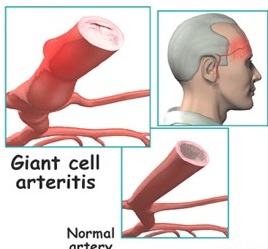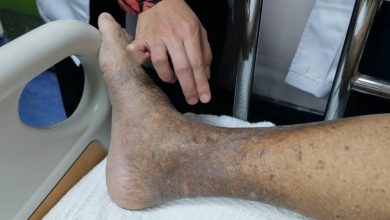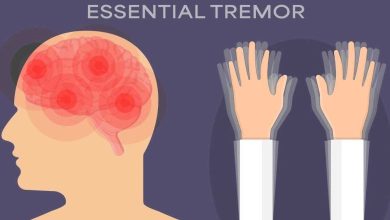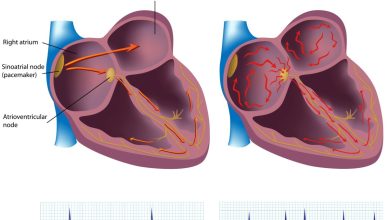Giant Cell Arteritis Causes, Symptoms, Diagnosis and Treatment

What Is Giant Cell Arteritis?
Also known as temporal arteritis, Giant cell arteritis is an inflammatory disease of the blood vessels. Usually it involves large and medium arteries of the head, mainly the branches of external carotid artery.
Steroids are used to reduce inflammation and prevent occlusion. No other drug is known to be effective.
A form of vasculitis, Giant cell arteritis is known to cause inflammation of the network of small vessels that supplies blood to the larger arteries.
It is known to affect arteries of the head and neck. Possible complications may include ischemia, occlusion of the arteries, and irreversible blindness.
Often diagnosed via a biopsy of the temporal artery, Giant cell arteritis requires prompt treatment if complications are to be avoided.
Causes Of Giant Cell Arteritis:
The underlying cause of giant cell arteritis is unknown.
In giant cell arteritis, the lining of arteries of head and neck becomes inflamed. This may cause swelling which in turn narrows the blood vessels. These results in a reduction of blood and oxygen supplied to the body’s tissues.
This reduction in oxygen supply then causes an individual to exhibit symptoms associated with giant cell arteritis.
Exactly why the arteries become inflamed is not yet known. However, genetics are thought to play a role.
Possible risk factors include:
- Having an age between 70 and 80 makes one susceptible to giant cell arteritis
- The chances of women developing giant cell arteritis is two times higher than men
- Race and geographic region.
- Giant cell arteritis is common among whites in northern European populations
- Polymyalgia rheumatica.
- Family history
Symptoms Of Giant Cell Arteritis:
The following symptoms are exhibited:
People present with:
- bruits
- fever
- headache
- tenderness and sensitivity on the scalp
- Jaw claudication (pain in jaw when chewing)
- tongue claudication (pain in tongue when chewing) and necrosis
- reduced visual acuity (blurred vision)
- acute visual loss (sudden blindness)
- diplopia (double vision)
- acute tinnitus (ringing in the ears)
Diagnosis Of Giant Cell Arteritis:
Giant cell arteritis can be diagnosed via:
- Physical exam, showing:
- Palpation of the head reveals prominent temporal arteries with or without pulsation.
- The temporal area may be tender.
- Decreased pulses
- Evidence of ischemia
- Lab test may show:
- liver function tests, are abnormal
- Erythrocyte sedimentation rate, an inflammatory marker, >60 mm/hour
- C-reactive protein may be elevated.
- Platelets may also be elevated.
- Biopsy
Treatment Of Giant Cell Arteritis:
The only effective treatment available is the intake of high doses of a corticosteroid drug such as prednisone.
Exercise programs and diet changes are also recommended.
By : Natural Health News




